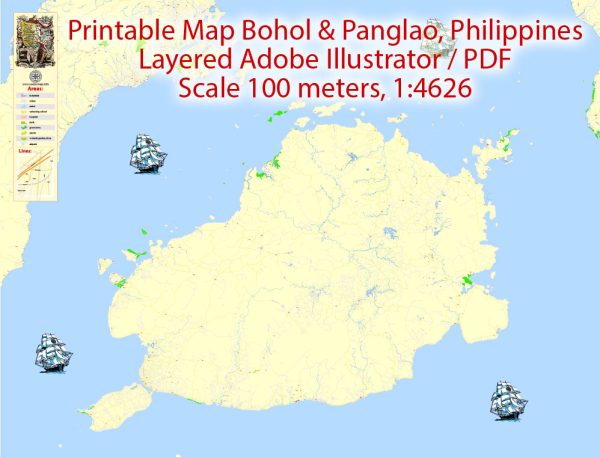Bohol is an island province in the Philippines, located in the Central Visayas region. The island of Panglao is one of Bohol’s most popular tourist destinations, known for its beautiful beaches and vibrant marine life. Let’s take a look at the history and description of Bohol and Panglao:
Bohol’s History:
- Pre-Spanish Era: Before the arrival of the Spanish colonizers in the 16th century, Bohol was already inhabited by indigenous people, including the Boholanos and the Pintados. These communities had their own cultures, languages, and political systems.
- Spanish Colonization: The Spanish conquistadors led by Miguel López de Legazpi arrived in Bohol in 1565. They successfully established Spanish rule, converting many of the native inhabitants to Christianity. The Spaniards introduced the Catholic faith and built churches, some of which still stand today, such as the Baclayon Church.
- American Occupation: After the Spanish-American War, the United States took control of the Philippines, including Bohol. This period brought various changes to the island’s governance and infrastructure.
- World War II: Bohol, like the rest of the Philippines, was occupied by Japanese forces during World War II. The island saw its share of battles and resistance efforts.
- Post-Independence: The Philippines gained independence from the United States in 1946. Bohol became a part of the newly formed republic and has since played a role in the country’s cultural, economic, and political life.
Bohol’s Description:
- Geography: Bohol is the 10th largest island in the Philippines and is situated in the central part of the country. It is known for its diverse landscapes, including lush forests, rolling hills, and karst limestone formations. The island is also surrounded by smaller islets and offers beautiful coastal views.
- Tourism: Bohol, and in particular, Panglao Island, is a major tourist destination. Panglao is famous for its white sandy beaches and clear blue waters, making it a haven for beach lovers and water sports enthusiasts. The Chocolate Hills, a geological formation of over 1,000 hills, is one of Bohol’s most iconic natural attractions.
- Cultural Heritage: Bohol is rich in cultural heritage. The province has several old churches and historical sites that showcase its Spanish colonial past. Additionally, the province is known for the Loboc Children’s Choir and traditional folk dances like the tinikling.
- Economy: Agriculture, tourism, and fishing are the primary sources of income for the people of Bohol. The island is known for its production of various agricultural products, including rice, coconut, and abaca.
- Transportation: Bohol is accessible via air and sea. Tagbilaran City, the capital of Bohol, has an airport with regular domestic flights. Ferries also connect Bohol to other nearby islands and regions in the Philippines.
Bohol, and specifically Panglao, continues to attract visitors from around the world due to its natural beauty, cultural heritage, and warm hospitality. Its history, which includes periods of Spanish and American colonization, has left an indelible mark on the island’s identity and culture.


 Author: Kirill Shrayber, Ph.D.
Author: Kirill Shrayber, Ph.D.